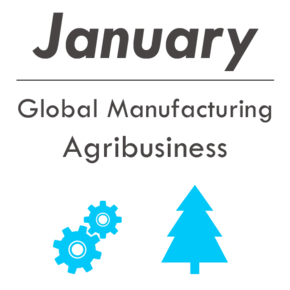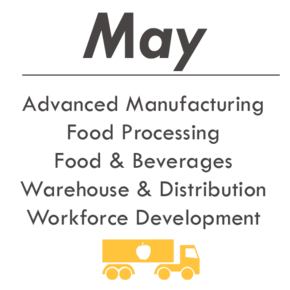How the Internet of Things is Pivoting Manufacturers into Service Providers
(Triple Pundit – Jennifer Tuohy: 1-27-16) Do you know the name of the company that made your doorbell?
If not, you’re pretty typical: Many homeowners make a single purchase from a manufacturer and never return to buy updated models, instead moving on to another vendor or even another product. Industry insiders call it “one and done” – but the age of the smart home is turning this concept on its head.
Nowadays, baked-in Internet connectivity enables everything from your smart thermostat to your smart doorbell to upload new features “over the air.” Thanks to the Internet of Things (IoT), one-and-done now means purchasing one product that gets better the longer a consumer has it.
It’s a positive new spin on a perennial customer-loyalty problem, but it’s one that poses some unique challenges.
Now, manufacturers must plan to continue to work on products, offering improvements and enhancements that can be delivered after the product leaves the loading dock. But this comes with a new responsibility for manufacturers: service and support. Manufacturers will need to be involved in the entire lifecycle of the product, not just its birth. Are they up to the challenge?
The start of a beautiful new relationship
The ability to improve a product after it is in the consumer’s hands is the key for manufacturers looking to unlock the promise of IoT. Building sensors and Internet connectivity into a product are just the beginning. What truly makes a product smart is the ability for it to develop intelligence — to learn and improve. It can either do this on its own through learning algorithms, or through after-market manufacturer input that improves the product with updates based on feedback from sensors and the users.
This new model is a reversal of the consumer-adverse process of making the initial product cheap, then increasing the price of the products needed to keep it functional (think: printers and ink or razors and blades). It hits on two of the core goals businesses should be striving for in today’s market space:
- Increased profits. By providing an Internet connection, a manufacturer can reach into a product after it’s left the loading dock and fix any issues before they become bigger problems. As any company that has ever dealt with a recall knows, this ability will save millions of dollars. “A big part of the IoT’s power comes in its ability to help businesses operate proactively instead of reactively; it essentially addresses problems before they’ve become problems,” wrote Tom Chapman in this post for TriplePundit.
- Keeping Customers Happy. The after-market value IoT can facilitate is almost limitless. By continuously adding value to its products, a manufacturer can transform its relationship with the consumer, creating brand loyalty that will extend to future purchases. For example, Nest Learning Thermostat debuted as a simple smart thermostat in 2011. It learned your routines and programmed itself for you, removing what was once a major pain for consumers.
Four years later, the Nest thermostat is the closest thing a smart home has to sentient brain. A Nest, whether it was bought in 2011 or 2015, can not only control the climate without input from the homeowner, but it can also control compatible lights: turning them on when it senses you are home and off when it senses you are away. It can activate Nest’s compatible security camera to record when you leave the house, and shut down the HVAC system when its compatible Nest Protect detector senses smoke or carbon monoxide.
None of these features were a part of the original launch of the product, but now any Nest owner can benefit from them. Nest also works with other manufacturer’s products through its Works With Nest program, further extending its value to the consumer.
The new challenge: Service and support
Of course, this possibility of ongoing iteration presents a new challenge for manufacturers: No longer can a company simply manufacture the best doorbell engineering can produce and move on to the next model. The introduction of something changeable to a product, in this case connected “smarts,” necessitates a service to go with it. Whether that service is simply support for the product, or whether it develops into an entire ecosystem that includes monthly fees (as Nest does with its cloud-based video recording for the Nest Cam), is a complicated choice. But in either case, the pivot to providing service and support with the product, while initially costly, will reap huge benefits.
For many Kickstarter-born or Silicon Valley startup products, support and the manufacturer go hand-in-hand, but for larger, more established manufacturers with legacy systems to circumnavigate, the pivot to becoming a service company poses a logistical challenge. Putting smarts into your product and then not providing support to back it up will, in the age of online customer reviews and Twitter, ensure a swift and brutal end to a product’s lifecycle.
Better for the consumer, better for business
So, what are the benefits? The combination of data received through an IoT product and feedback through the service/support loop is incredibly valuable. After all, data is the currency of the new millennium. How that data is put to use will vary for each product, but first and foremost it can and should be used to inform product development, whether the product is already in the hands of consumers or still to come.
Take the example of Ring’s Video Doorbell. The product was originally envisioned as a simple way to remotely communicate with whomever was at your front door. In an interview with TechCrunch, Ring’s founder and CEO, Jamie Siminoff, said the company learned from early customers that many were finding strangers coming up to their front doors and ringing the doorbell, then leaving when it was answered. This led the company to pivot from a simple connected doorbell to a full-featured security product, complete with motion alerts and motion-sensing recording, so that the doorbell doesn’t even need to be pressed for the video to start recording. That video is then stored in the cloud, accessible anytime by the user for a monthly service fee.
The iteration didn’t end there. Today, customers who purchased a Ring doorbell can have it unlock their front door, too, if they have a compatible smart door lock. Further integrations within the home are planned for Ring, meaning that while a $200 doorbell sounds like an extravagance, its current and future capabilities could one day save your home.
Service as a product
As manufacturers grapple with the changes IoT is bringing to their business, keeping the concept of service and support as a product foremost in the development process will serve them well. As we’ve seen, the benefit of a closer relationship with the customer will help produce products the consumer wants, driving up profits and minimizing the impact costly manufacturing mistakes have on the planet.
(Jennifer Tuohy is a tech enthusiast who is fascinated with Internet of Things smart products and the future possibilities they hold. She provides interesting insight on what IoT means for manufacturers.)




